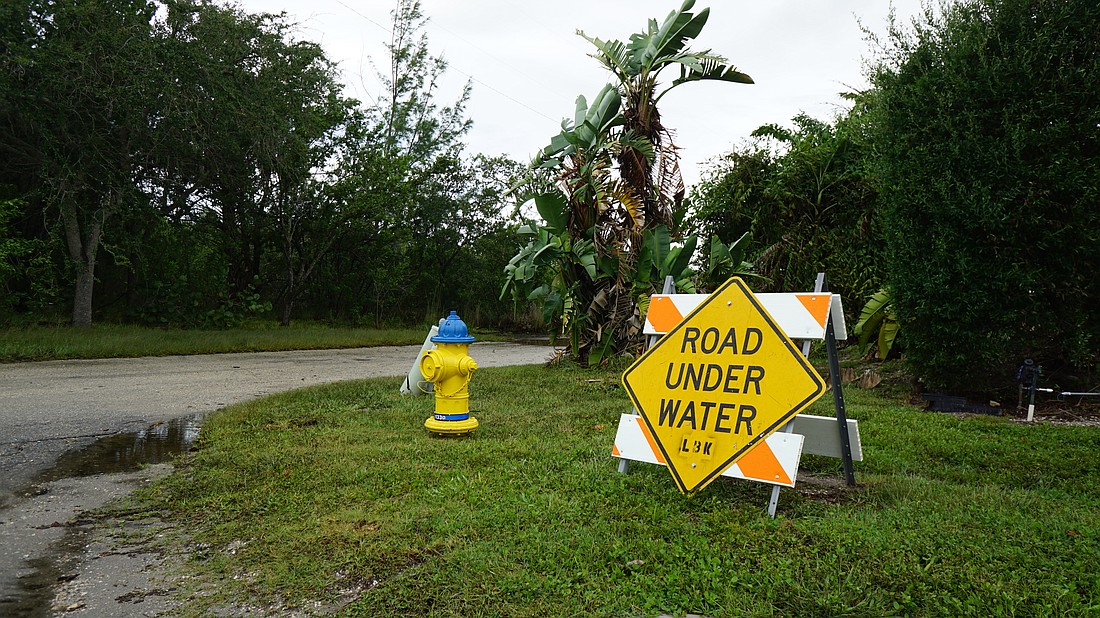- April 4, 2025
-
-
Loading

Loading

When can residents expect water to be turned back on after a storm?
It’s an important question, and although Hurricane Idalia didn’t cause a need for the water to be turned off, the storm did prompt Manatee County and Longboat Key to reevaluate some protocols.
Manatee County Director of Public Safety Jodie Fiske shared with county and town commissioners on Oct. 31 that after Idalia, the county’s evaluation led to some big changes for the next storm activation.
When a major storm threatens the Gulf of Mexico, Longboat Key’s emergency management team jumps into action. This means that select Longboat Key officials, such as Fire Rescue Chief Paul Dezzi and Assistant to the Town Manager Susan Phillips, are sent to Sarasota County’s Emergency Operations Center.
But starting with the next storm, a Longboat Key representative will also be invited to the Manatee County Emergency Operations Center.
The Longboat Key representative in the Manatee County EOC will be a part of all the meetings and be involved with operations and planning.
Fiske said this is an effort to have better communication and so information can be relayed back to the Longboat Key community more quickly.
This change will take place immediately. Hurricane season isn’t over yet, Fiske said.
Fiske also said she and her team have been talking with Dezzi since Idalia, and both parties shared their reentry protocol so everyone is fully aware of the other’s criteria.
Longboat Key Vice Mayor Mike Haycock wanted to ensure residents don’t get confused about this, though, since it was decided years ago that the island would mainly follow Sarasota County’s protocols.
Town Manager Howard Tipton said that’s still true.
“One of the things that we noted is that even though we are dealing primarily with Sarasota County, so much of the interaction also includes the county to our north,” Tipton said. “So we need to have a greater presence with Manatee (County) and have a better line of communication.”
Commissioner-at-Large BJ Bishop urged Fiske to continue to take into account factors such as king tides in the near future, saying there were some communities in Longboat Key that were flooded even before activation recommendations were issued.
“I think one of the issues that we’re going to have to deal with is the reality that these storms are coming faster, harder,” Bishop said.
Hurricane Idalia also led to questions about the county’s water system. Jim Renneberg is Manatee County’s interim director of utilities, and he briefed commissioners at the same Oct. 31 meeting.
Renneberg said because of how low the island is, and the number of feeds for the water supply, a storm passing through the island could lead to numerous issues. The situation could also arise where there is no water or wastewater service for some time after the storm.
“So what we’re trying to do is trying to develop a plan, so that way we can minimize our risk,” Renneberg said.
This means the system will need to be preemptively turned off. Renneberg’s team developed a criteria for just that.
Renneberg said his department will monitor for the earliest reasonable arrival of tropical storm force winds. When winds reach that level, that’s when it’s no longer safe for workers to go out.
If the storm is reaching category three, or has a storm surge projected at five feet or above, the decision will be made about 24 hours before landfall. At this time, island communities would be notified.
Then, at 10 hours before, crews will go out and turn the valves off.
Those hours are all necessary, Renneberg said.
Crews need enough time to get to the valves, turn them off and then look over the wastewater system. They need to make sure the wastewater is flushed out, and then get back to safety.
After the storm passes, emergency management officials will need to ensure the area is safe before the utilities crew can come back to turn the water on. That’s when the crew will inspect the system for any repairs and make sure wastewater can still flow properly.
If the water is shut off and then turned back on, Renneberg said there would most likely be a boil water notice for a minimum of 48 hours after.
An interlocal agreement is currently being developed with all the island communities, and Renneberg is reviewing the feedback to formalize the plan.
“We’re working through to formalize this and then develop this, and then continue to work for it and work with the island communities making sure we have the best plan in place so that way when we have our next storm we are more prepared and we are working together proactively,” Renneberg said.